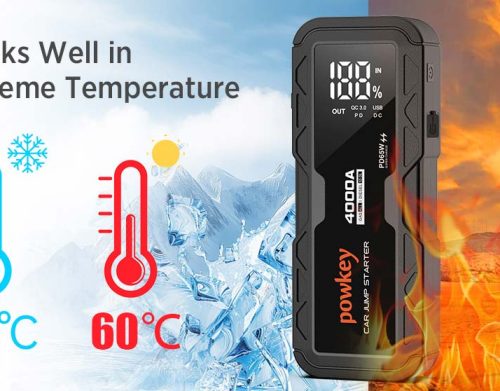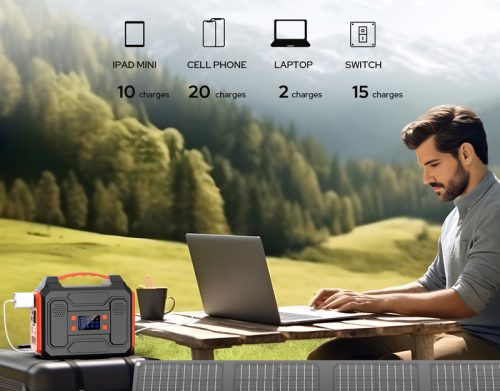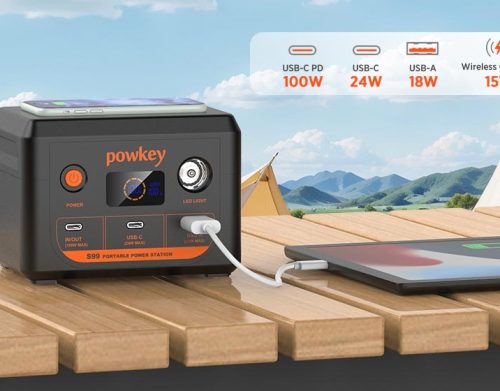LiFepO4 phosphate battery, the full name of LiFepO4 phosphate lithium ion battery, refers to the lithium ion battery using LiFepO4 phosphate as the positive electrode material. Here is the battery naming rule in the industry. At this stage, we usually use the positive electrode material to name the battery. The negative electrode is generally made of graphite. For example, the ternary battery refers to NCM or NCA used as the positive electrode material. The lithium cobalt oxide battery refers to the lithium cobalt oxide used as the positive electrode material. Similarly, LiFepO4 phosphate refers to the LiFepO4 phosphate material used for the positive electrode.
Compared with lead-acid batteries, it has a good lifespan, which is generally 1-1.5 years; compared with nickel-hydrogen batteries, it has a higher working voltage; compared with nickel-cadmium batteries, it has better environmental friendliness. For large-scale development, high-capacity LiFepO4 phosphate batteries (100AH, even 200AH batteries) are used.

The main advantages of LiFepO4 phosphate batteries:
High safety performance
The P-O bond in LiFepO4 phosphate crystal is stable and difficult to decompose. Even at high temperature or overcharge, it will not collapse and generate heat like lithium cobalt oxide or form strong oxidizing substances. The decomposition temperature of LiFepO4 phosphate is about 600 ° C, so it has good safety. Although in the case of overcharging, there will be over-burning and explosion, but its overcharging safety has been greatly improved compared with ordinary liquid electrolyte lithium cobalt oxide batteries and ternary batteries.
Ong life
The cycle life of lead-acid batteries is about 300 times, and the maximum is about 500 times, while the cycle life of LiFepO4 phosphate power batteries can reach more than 2000 times, and the standard charge (0.2C, 5 hours) can reach 2000 times. Lead-acid batteries of the same quality are “new for half a year, old for half a year, and repaired for half a year”, which is 1 to 1.5 years at most, while LiFepO4 phosphate batteries are used under the same conditions, and their theoretical life will reach 7 to 8 years. Considering comprehensively, the performance-price ratio is theoretically more than 4 times that of lead-acid batteries. High-current discharge can quickly charge and discharge at a high current of 2C. Under the special charger, the battery can be fully charged within 40 minutes after charging at 1.5C, and the starting current can reach 2C, but lead-acid batteries do not have this performance.
Good high temperature performance
The electric heating peak of LiFepO4 phosphate can reach 350°C-500°C, while lithium manganese oxide and lithium cobalt oxide are only around 200°C. The working temperature range is wide (-20C–+75C), with high temperature resistance, the electric heating peak of LiFepO4 phosphate can reach 350°C-500°C, while lithium manganese oxide and lithium cobalt oxide are only around 200°C.
Large capacity
It has a larger capacity than ordinary batteries (lead-acid, etc.). According to the capacity density of the battery, the energy density of the lead-acid battery is about 40WH/kg. The mainstream LiFepO4 phosphate battery on the market has an energy density of more than 90WH/kg.
No memory effect
When rechargeable batteries work under the condition that they are often fully charged, the capacity will quickly drop below the rated capacity value. This phenomenon is called the memory effect. Ni-MH and Ni-Cd batteries have memory, but LiFepO4 phosphate batteries do not have this phenomenon (lithium-ion batteries generally have no memory effect). No matter what state the battery is in, it can be charged and used at any time, and there is no need to discharge it before recharging.
Light weight
The volume of the LiFepO4 phosphate battery with the same specification and capacity is 2/3 of the volume of the lead-acid battery, the weight is 1/3 of the lead-acid battery, and the energy density is several times that of the lead-acid battery.
Environmentally friendly
The battery is generally considered to be free of any heavy metals and rare metals (rare metals are required for nickel-metal hydride batteries), non-toxic (SGS certified), non-polluting, in line with European RoHS regulations, and is a green battery. An important reason why lithium batteries are favored by the industry is environmental considerations.
But please face up to one thing, lithium battery belongs to the new energy industry, but it cannot avoid the problem of heavy metal pollution. Lead, arsenic, cadmium, mercury, chromium, etc. in the processing of metal materials may be released into dust and water. The battery itself is a kind of chemical substance, so there may be two kinds of pollution: one is the pollution of process excrement in the production engineering; the other is the pollution of the battery after it is scrapped.
Comparison with other materials
At present, the most promising cathode materials for power lithium-ion batteries are modified lithium manganese oxide (LiMn2O4), LiFepO4 phosphate (LiFePO4) and nickel-cobalt lithium manganate (Li(Ni,Co,Mn)O2) ternary materials. Nickel-cobalt lithium manganese oxide ternary material is generally considered difficult to become the mainstream of power lithium-ion batteries for electric vehicles due to the lack of cobalt resources, high nickel and cobalt ratios, and large price fluctuations. However, it can be mixed with spinel lithium manganese oxide within a certain range.



